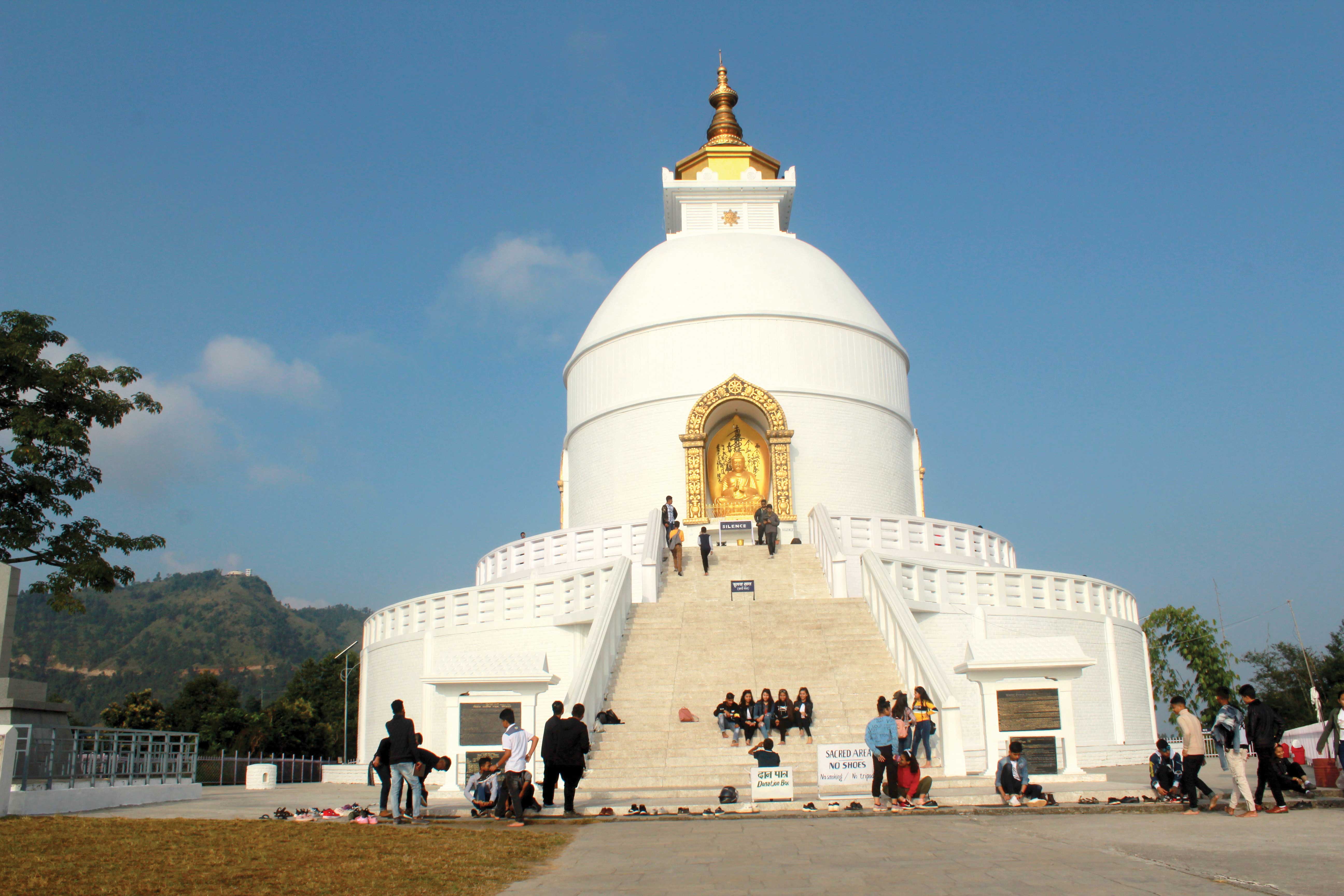At midnight we heard the tiger’s call, a dark and ominous ooooooomm far off in the jungle. Then, the resort elephants trumpeted at the scent of a pack of jackals. The jackals cried in unison like an out of tune chorus, a chilling sound. The elephants were the loudest, however, belting out a series of high brassy blasts followed by low, deep bellowing that seemed to shake the earth. Impressive, even frightening, in the dark.
As dawn broke I went down to the viewing deck to listen to the start of another day in the jungle. I was at one of Nepal’s top-of-the-line lodges, Temple Tiger, located at the west end of Nepal’s Chitwan National Park. There are six resorts inside the park, from Machan at the east to Tiger Tops, Island Jungle Lodge and Temple Tiger at the west. They are all recommended for a few days’ visit, or longer. But, while there, be sure to stand still and listen.
There’s the familiar coo-ing of the common spotted dove, for example, along with the plaintive four-note call of the Indian Cuckoo, a sound like “in-thebottle” or, to Nepalese villagers: “kap-hul pak-yo”, signaling the start of summer when the kaphul berries are ripe (pakyo). Those four syllables could just as well be telling us pake-ko chai-na (‘they-are-notripe’), which inevitably brings a laugh. Wordplay is a happy pastime among Nepali speakers, specially when it comes from a sahib (a form of address I’ve had to live with but have never encouraged).
The swamp at Temple Tiger camp is a quiet and ecologically diverse backwater, perpetually alive with jungle creatures, especially water birds: pond herons, dark moorhens, iridescent blue kingfishers, brown bitterns, flocks of lesser whistling teal (ducks), occasional cormorants and darters, and stately white egrets. And undulating along through the trees at the edge of the swamp in summer is one of the most beautiful and graceful of Nepal’s jungle birds—the long-tailed paradise flycatcher male. His call is a neat chwt-chwt. One morning in the midst of all these birds and bird calls, a young one-horned rhino, the prehistoric gaida, grunted contentedly while cavorting in the muddy water. And, one time I saw a great but silent mugger crocodile lazing on the bank. Was it a him or a her?— who knows, for a croc’s gender is hard to tell and getting close enough to find out is not recommended! Tigers may also be seen, occasionally (as I did one afternoon), on the far side of the swamp, or while swimming across the murky water. Lodge guests should stay vigilant.
Other sounds of the morning may include the quiet, almost mournfully repetitious aaaaa-aaaaa of the emerald dove. I watched one strutting along with its jerky walk. And I recognized the snigger of a jungle myna, a bird with white flashes on its wings. Bulbuls were also common in the bushes, both the red-whiskered variety with its mellow warble, and the redvented kind that repeatedly chortled something like wheat-tweet-ear, wheat-tweetear. Then the mellow chrr-chrr (up to seven times) of the chestnut-headed bee-eater attracted me to a lone kadam tree from which he dived down near the ground to snap up insects to eat. He’s a beautifully colored bird with chestnut cap and nape, bright yellow throat, green body, and baby blue on his rump. Only the scarletbreasted sunbird can best the bee-eater. The sunbird’s call is a sharp trill, but its bright shimmeringly iridescent scarlet color especially amazes bird-watchers.
What better way to begin a Chitwan morning than listening to the sounds of the jungle, then trying to figure out how to write them... Recognizing each one is a fine art, and I thank the resort naturalists for guiding me on that score. Without their help I’d have been lost, which might have resulted in panic and frustrations with sounds that I’d prefer not to emit or write about.
Don Messerschmidt may be contacted at don.editor@gamail.com
Some lesser-known vegetable dishes from the southern plains
I’m not a vegetarian but I love vegetables. And whenever I get to the southern plains of Nepal, I try...










